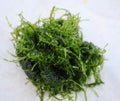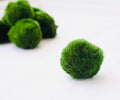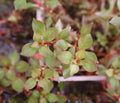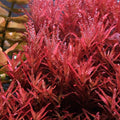How to Grow and Care For Bucephalandra
Growing a Buce plant is very easy. When you successfully maintain its optimum condition, you will not just see its vibrant, iridescent leaves but also see its pretty flowers.
What is Bucephalandra?
Widely known as Buce, this magnificent aquarium plant named Bucephalandra is being obsessed by tonnes of aquarists. This small plant produces beautiful flowers that grow slowly which takes patience and tender love. It needs fertilization, a good amount of CO2, and a rich source of light to speed up its growth.
Buce is a rheophytic plant and it originated from Borneo, Indonesia. This aquatic plant grows in rivers and streams. It can tolerate solid currents and it has evolved its strength to anchor on rocks and other surfaces.
Buce can grow both immersed or submersed, in terrariums or aquariums alike. It means that Bucephalandra can live whether it is planted underwater or above the waterline.
Even though there are 3 recognized Bucephalandra species, there over 30 unofficial species and varieties are discovered. The most prominent species of Buce is Bucephalandra Gigante according to Joseph Bogner, one of the most famous aroids experts. This is exported from Borneo and has spread out with different varieties which makes it more exciting and fun to add this to one's aquarium plant collections.
How to Grow Bucephalandra in an Aquarium?
It is easy to grow a Bucephalandra plant. They can grow under low lighting and do not require lots of fertilizer or Carbon Dioxide, also, they don't need any substrate to grow. However, it is important to maintain its health. It is prone to algae growth and they have slow growth.
We suggest to grow Buce in the shaded portion of your water tanks and use algae-eating aquatic animals to keep its leaves clean. A cooler, well-filtered and flowing water in a stable and biologically-matured aquarium is a great place for Buce plants to prevent the deterioration of their leaves.
How do you Plant Bucephalandra in Aquariums?
Most of the Bucephalandra supplies are often sold and come in large clumps. However, the most effective way to grow is to separate the clumps into individual plants. This will allow the plants to have adequate spacing for a much faster and healthy Buce plants propagation.
This way, each plant will get a better supply of flow, water, and light. This also helps clear off the dead lives and rhizomes and makes space for the growth of new leaves. When separating the clumps, see to it that the rhizomes are about 1.5 inches long.
This will help the rhizomes to sprout new leaves and grow in healthy conditions. Removing its old deteriorated leaves is something you should not miss to do so that it will keep the plant alga-free.
Colouration of Bucephalandra leaves
The best feature of this plant is its leaves and it is crucial to know how to keep its vibrance intact. Proper lighting, a small amount of CO2, and an ample amount of fertilization will help enhance the color of the leaves.
Buce that lives in an aquarium has a weaker quality than those that are habituated in natural bodies of water like rivers. In order to maintain its life, you have to add humidity to avoid drying out the leaves.
How to Keep a Healthy Buce Plant
One way to keep it healthy is to make sure that the pH level of the water is between 5 to 8, and its temperature should be between 22 to 28 degrees Celsius. Otherwise, it will wilt the plants.
Buce plants love to thrive in fast-flowing waters so it is a great idea to mimic the same condition even when they are grown in aquariums. You can place these plants near the filter outlet and you will see how flexible these leaves are because it is their nature to their native environment.
You will easily notice if your buce plant is in good and healthy condition when it grows fast. A healthy Buce can grow one or two leaves per week. When it is grown in optimum condition, it will produce flowers too. A buce plant can grow up to 25 centimeters and they can produce flowers in pink or white colors.
There are lots of buce for sale and variety to choose from! Take a look at our collection and make a purchase!
















